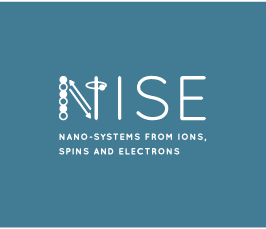Direct observation of momentum-resolved Landau levels in strained monolayer graphene
Seminar
- Datum: 05.11.2018
- Uhrzeit: 11:00
- Vortragende(r): Prof. Andrea Damascelli
- Quantum Matter Institute and Physics & Astronomy Department, UBC, Vancouver Canada
- Ort: Max-Planck-Institut für Mikrostrukturphysik, Weinberg 2, 06120 Halle (Saale)
- Raum: Lecture Hall, B.1.11

In the presence of strong magnetic fields, two-dimensional (2D)
electron systems display highly degenerate quantized energy levels
called Landau levels. When the Fermi energy is placed within the
energy gap between these Landau levels, the system bulk is
insulating and charge current is carried by gapless edge modes. This
is the quantum Hall effect, belonging to the remarkable class of
macroscopic quantum phenomena and the first member of an
ever-growing family of topological states. While angle-resolved
photoemission spectroscopy (ARPES) has been a powerful tool to
investigate numerous quantum phases of matter, the traditional
quantum Hall states – and thus their momentum-resolved structure –
have remained inaccessible. Such observations are hindered by the
fact that ARPES measurements are incompatible with the application
of magnetic fields. Here, we circumvent this by using graphene’s
peculiar property of exhibiting large pseudomagnetic fields under
particular strain patterns, to visualize the momentum-space
structure of electrons in the quantum Hall regime. By measuring the
unique energy spacing of the ensuing pseudo-Landau levels with
ARPES, we confirm the Dirac nature of the electrons in graphene and
extract a pseudomagnetic field strength of B = 41 T. This
momentum-resolved study of the quantum Hall phase up to room
temperature is made possible by exploiting shallow triangular
nanoprisms in the SiC substrates that generate large, uniform
pseudomagnetic fields, arising from strain confirmed by STM and
model calculations. Our work demonstrates the feasibility of
exploiting strain-induced quantum phases in 2D Dirac materials on a
wafer-scale size, opening the field to a range of new applications.